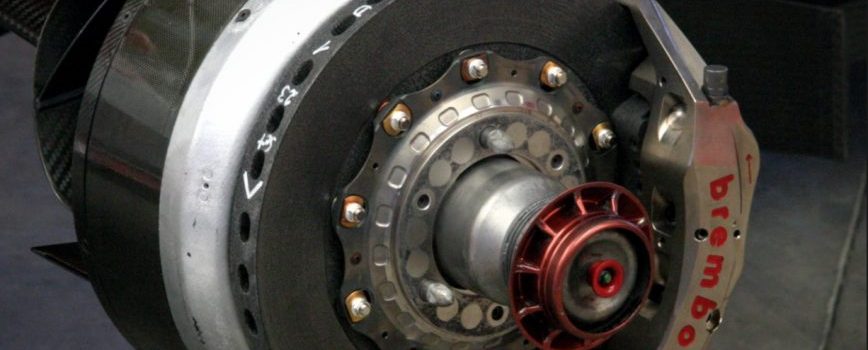The average driver doesn’t think much about the brakes on his car; in fact, most are likely to ignore the braking system until they hear the metallic squeal of wear indicators dragging on brake rotors. Modern braking systems on passenger cars are very good at what they do, within reasonable limits (such as slowing a car from 70 miles per hour, or working effectively with cold rotors and brake pads). Braking systems for race cars, on the other hand, must have much higher limits.
Nowhere is that more true than with Formula 1 racing. The ideal brake rotor would be light (since unsprung weight is the enemy of handling) and able to withstand the temperatures generated by slowing a car from 200 miles per hour to take a first-gear corner. Carbon fiber is used for F1 brake rotors, because it blends light weight with extreme temperature resistance.
So why don’t production cars use carbon-ceramic brake rotors? First, they’re absurdly expensive, with replacement rotors and brake pads costing as much as $5,000 per corner, versus less than $100 per corner for conventional brake pads and cast-iron rotors. Next, they don’t last as long as cast iron rotors, so carbon ceramic braking systems require more frequent maintenance. Finally, for optimum performance, carbon ceramic systems require heat, more than you’d get from driving at highway speeds.
There are production cars, like the Corvette ZR-1 and the Porsche 911 GT3 RS, that can be equipped with carbon ceramic brakes from the factory. When buying a new car of this caliber, it’s good to make certain you can afford the care and feeding, not just the car payment.





